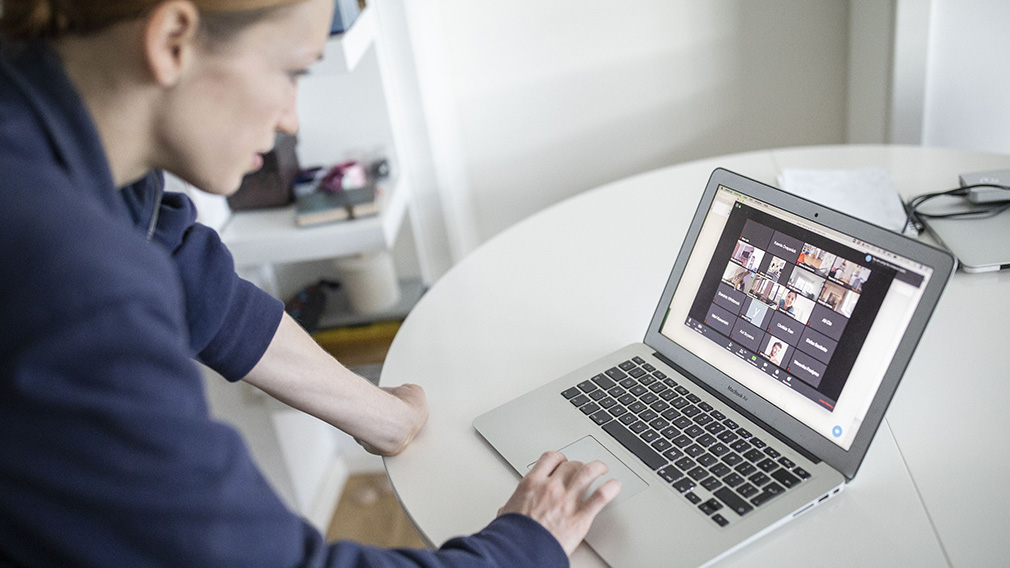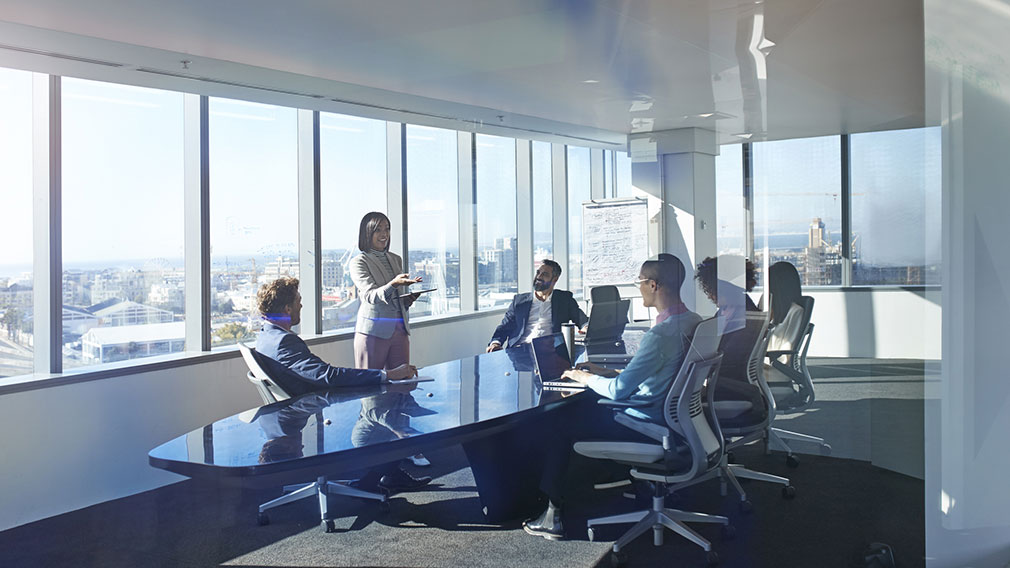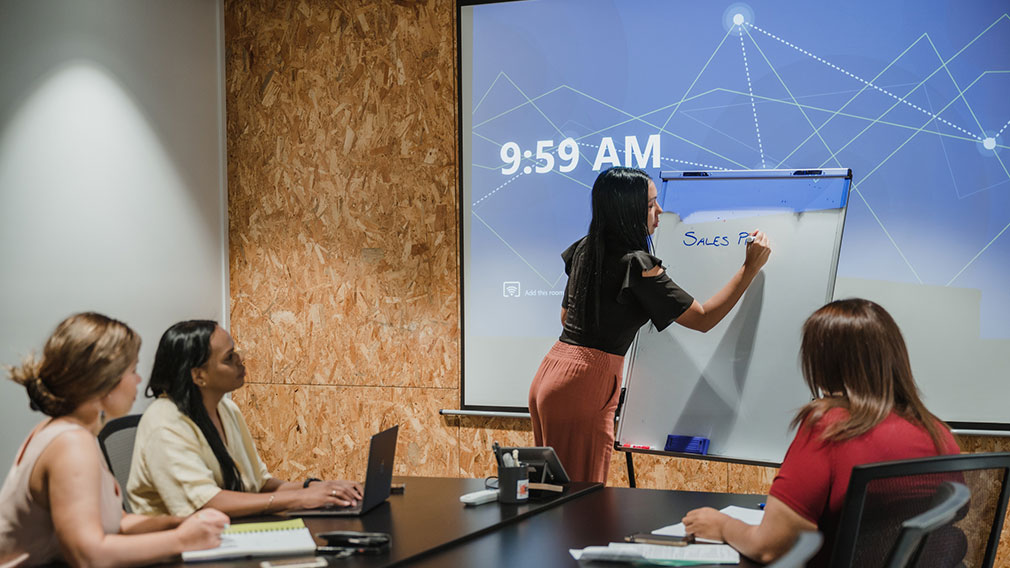‘Have agenda or forget it’: Making remote meetings work

More meetings, press conferences and lessons are occurring over platforms such as Zoom. (Getty)
There are few things more draining on morale than a meeting that starts late, lacks purpose and wanders off track.
And with many Australians working from home to prevent the spread of COVID-19, there’s a risk of these bad meeting habits being exacerbated, leaders say.
“At the moment, I think some people are treating meetings as a way of looking busy,” says Sydney-based tech commentator Geoff Quattromani. “When working from home, people are very conscious that their manager might think they're not doing enough. So, they’re filling up peoples’ diaries with hour-long ‘catch-ups’.”
He says it has never been more important to keep things short and sweet, as those still able to work are inundated by the business demands of responding to COVID-19.
“Open an online meeting by letting people know that you’re going to keep it short,” suggests Quattromani, adding sending a ‘pre-read’ document ahead of time can also help.
“Set some ground rules, if need be. Once you've done that, do a really quick check-in before getting straight into the agenda so that no one feels like they're wasting their time.”
According to the Westpac-Melbourne Institute Index of Consumer Sentiment survey for April, just over 34 per cent of people employed were working from home most of the time, with the proportion far higher among those working across communications, finance and insurance, education and government administration. In addition, just under a third said closures of schools and day care centres would impact their ability to work.
Alita Harvey-Rodriguez, managing director of Melbourne-based Milk It Academy, says having video meetings with her staff is a vital way of checking that her team is coping during a time of upheaval and disruption.
But it requires the right structure.
“I don’t think that a remote meeting has to be inferior to a face-to-face meeting in any way. That’s provided you’re using the right tech and have the right focus, which is to keep your team on track at a time when everybody is kind of scrambling,” she says.

Alita Harvey-Rodriguez says video meetings with her staff are vital. (Provided)
There was a time, however, when endless meetings were the bane of her existence.
“We were having a meeting before the meeting to talk about what we needed to do during the meeting,” she recalls.
Pointless practices like these plague organisations the world over and undermine productivity, according to Steven Rogelberg, the American author of the new book The Surprising Science of Meetings.
“There really is no one single problem undermining meeting effectiveness. It is a constellation of dysfunction that comes about from having the wrong attendees, the wrong time allotment, poor facilitation, and a non-compelling agenda,” Rogelberg tells Westpac Wire.
He found that the problem is getting worse, with more meetings held now than ever before. In the pre-pandemic era, a staggering 55 million meetings were taking place every day in the United States, as opposed to 11 million 40 years ago. The average executive reportedly spends 23 hours a week in meetings.
According to Doodle’s 2019 state of meetings report, more than a third (37 per cent) of employees consider unnecessary meetings to be the biggest cost to their organisation. As Rogelberg writes, “no other corporate investment of this scale is treated so casually”.
But while some, such as Atlassian’s futurist Dominic Price, have taken the radical step of cancelling every meeting, a world without meetings isn’t the answer, says Rogelberg – and that is particularly so during times of social distancing and isolation.
“The elimination of meetings is a false goal because humans are inherently social creatures who value interaction and engagement with others. At the same time, we need meetings for communication, cooperation, consensus and decision-making,” he says.
Three years ago, Harvey-Rodriguez sat down with her team and carried out a “meetings retrospective”. They identified inefficiencies and introduced a short meeting known as a huddle, scrum or WIP (Work in Progress). Participants stand up throughout the meeting “to keep energy high” and avoid waffling, says Harvey-Rodriguez. Regular huddles are also held at Westpac.
Amid the COVID-19 crisis, Harvey-Rodriguez’s team continues to hold huddles while working from home, and they also use the software program Miro for brainstorming sessions, as it allows participants to use a virtual chalkboard. Others recommend Zoom for creating smaller breakouts teams within a large meeting.
Quattromani’s top tech tip is to always remember that you are being watched while your webcam is on, hearing of people taking their laptop to the toilet or complaining to their spouse after the meeting about it being a waste of time.
A year ago, Judy Sahay began to notice increasing rates of overtime, absenteeism and requests to work from home among her staff at Crowd Media Group in Melbourne. The managing director began to suspect that it had something to do with the increasing frequency and length of meetings.

Judy Sahay says she won’t attend or will put an agenda together if invited to a meeting without one. (Provided)
“A typical day could be five or six meetings – my team had so many meetings that they were struggling to actually get their work done,” she recalls.
Matt Cowdroy, the owner of Sydney-based time management consultancy, Think Productive, says it’s not an uncommon situation, describing bad meetings as hugely detrimental to organisations, with the corollary also true.
“A meeting is where culture can be made or destroyed,” he says. “A lot of people don't feel noticed or valued at work. They feel disconnected; like they’re on an island. Meetings can be can be a really powerful form of team building.”
Striking the right balance can be tricky, however.
To free up more of her team’s time, Sahay replaced the standard one-hour meetings with shorter blocks of 30, 15 and even seven-minute meetings, used for internal catch ups where everyone gives a 30-second update.
The result? The amount of time Sahay’s team spends in meetings has halved, with the most popular timeframe for a meeting is 15 minutes. And don’t even think about not having an agenda.
“If I’m invited to a meeting without an agenda, I either won’t attend or I will put one together,” she says. “Without one, a meeting is just a loose conversation and the loudest voices in the room tend to take over.”
With online meetings likely the new normal for a while, ensuring all voices are heard is even more important. Quattromani recommends asking everyone if they have something to contribute at the end, rather than just asking, “anyone else?”
And what’s the best way to end? Easy, says Cowdroy, regardless if it’s online or in-person: finish five minutes early.
That way you’ve got a few minutes before your next meeting...
The views expressed are those of the author and do not necessarily reflect those of the Westpac Group.



